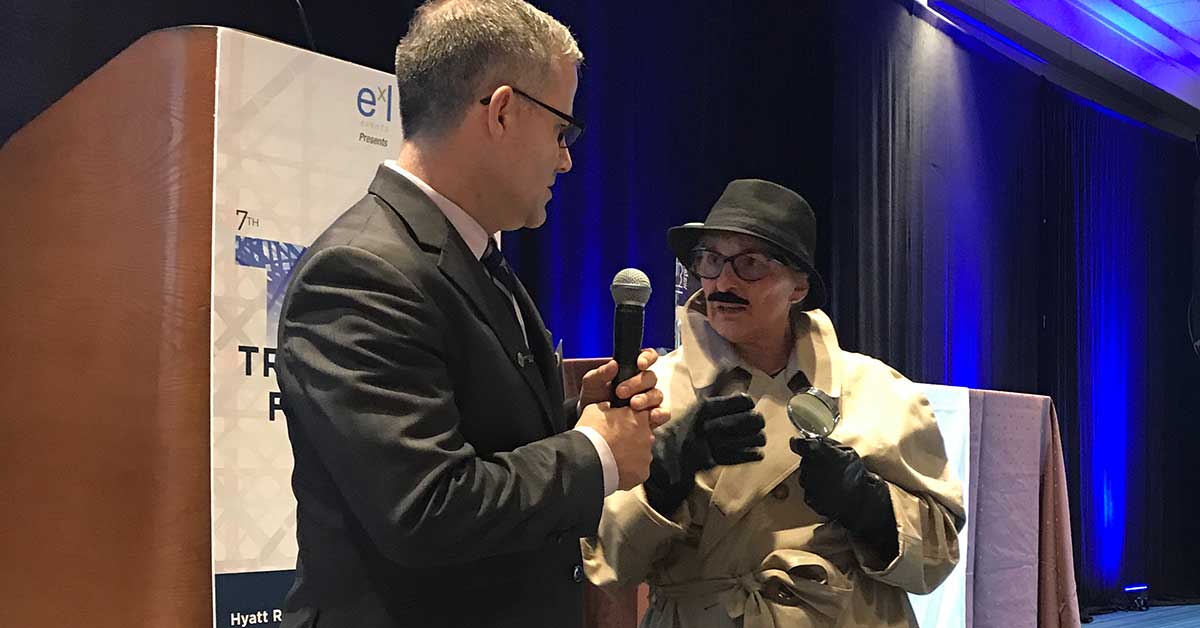
At Montrium, we recently launched the TMF Incubator program—an initiative designed to support early-stage life science teams as they prepare to scale. As we reviewed applications and spoke with startup teams, one thing became clear: many of the challenges these companies faced weren’t just about technology—they were about survival and scale. How do you secure funding in a volatile market? What should your team look like in the early days? How do you manage internal buy-in when introducing new clinical systems? When is it time to bring operations inhouse, and when should you outsource? These weren’t just process questions—they were growth questions. Strategic questions. High stakes questions. And we wanted to get exceptional answers.
SCALING LESSONS FROM A SEASONED BIOTECH COO/CDO
That’s when we reached out to Suzanne Vyvoda, a fractional Chief Operating Officer and Chief Development Officer who’s helped numerous biotech startups navigate the murky waters of clinical operations. With more than two decades of experience spanning site coordination, CROs, and sponsor-side leadership, Suzanne has seen it all—and helped build it.
I sat down with Vyvoda to talk shop: about the rise of fractional leadership, how to keep operations lean without losing your mind, future-proofing your company in a volatile market, and what it really takes to get a molecule out of the lab and into the clinic. In our interview, she breaks down some of the most pressing questions we heard from our TMF Incubator applicants. Whether you're planning your first IND submission or wondering how to stretch your next seed round, her no-nonsense insights will help you avoid common pitfalls—and set your team up to execute with clarity and confidence.
FROM SITE-LEVEL COORDINATOR TO C-SUITE STRATEGIST
Suzanne Vyvoda never set out to become a biotech fixer. "I stumbled onto clinical research out of college," Vyvoda tells me. "When I was in college, I really had no idea what I wanted to do, where my path was going to take me." That path began at a cancer hospital, where she worked for a physician deeply involved in clinical trials. "That really opened my eyes to what clinical research looked like at the site level."
hose early encounters shaped her perspective—and her ambition. "I wanted to sit at the table where the protocol was being written because a lot of the protocols I received, they clearly didn't understand my role as a coordinator, what was possible within a given amount of time."
From there, Vyvoda moved through roles at CROs and eventually into the sponsor world. Drawn to the fast pace and broader scope of smaller companies, she began building teams and departments from scratch.
"I love the idea of getting to put my own stamp on what a clinical operations department could look and feel like."
This hands-on experience offered unparalleled opportunities for growth. "It's getting to try things you've not necessarily tried before, but it's also sitting at tables that maybe you weren't sitting at before."
When her company was acquired in late 2023, Vyvoda found herself job hunting in what she describes as "a very different sort of market"—crowded with talent and cautious on hiring. "I took an opportunistic angle on that and leaned into some fractional leadership roles for executives who I knew," she says. The shift wasn’t just pragmatic—it was perfectly timed. Now, she’s become a sought-after fractional COO/CDO, parachuting into early-stage biotechs to steady the ship, scale infrastructure, and “build the plane while flying it.
THE RISE OF THE FRACTIONAL EXECUTIVE
We asked Suzanne:
• What’s driving the rise in fractional executive roles?
"Going into 2025, I really realized that there's a huge market for fractional leadership right now," she explains.
"The FTE market is still very, very unstable. Folks are reluctant to invest in expensive executives where their fundraising path feels very uncertain. They don't necessarily have the funding to bring on executives full time, but they still need that executive level strategic support."
This new model of leadership—where seasoned executives divide their time across multiple early-stage companies—is transforming how biotech startups operate. "It helps those founders and executives really diversify their skill set and bring on the expertise that they need.
It also allows them not to necessarily get really bogged down with a lot of heavy headcount and salaries that these small companies can't sustain." For the executives themselves, it offers a unique opportunity to demonstrate their value across multiple organizations. "It's almost a try before you buy," Vyvoda notes. "If that company is successful in raising money, a lot of times these fractionals join full time."
THE BIOTECH FUNDING CRISIS
We asked Suzanne:
• Tell us about the current changes in the R&D funding landscape & what that means for small biotech?
• What are VCs looking for in smaller companies?
• How can early-stage biotechs demonstrate clinical readiness to potential investors?
When I ask about the current funding landscape, Vyvoda doesn't sugarcoat the reality.
"We're in a new chapter—one defined by sharper scrutiny and shorter runways. The era of 'fund first, figure it out later' is over."
For small biotech companies, this means ruthless prioritization—preparing earlier and pitching smarter. "Every dollar has to stretch further, and every decision is under the microscope," she explains. The implications extend to the entire ecosystem: "For CROs, the shift is more subtle—but still real. Sponsors are asking harder questions, expecting more strategic partnership, and looking for clear ROI on every vendor relationship."
The challenge for biotech startups is unique compared to other tech sectors: "Unless you have a commercialized product, you don't have any revenue. There is no product until you get that FDA or commercial approval, so you're operating off of the money that you can raise."
And what are investors looking for, exactly? "Clarity, conviction, and a credible plan,” she replies. It's no longer enough to have promising lab results or a novel mechanism of action. "Investors want to see a company that knows where it's going, not just scientifically, but operationally." Gone are the days when strong preclinical data alone could carry a pitch. Today's VC's expect early-stage biotechs to come prepared with draft protocols, vendor quotes, timelines and a team that looks ready to hit the ground running. "Build from day one like you'll be in the clinic tomorrow," Vyvoda tells me.
SCALING WITHOUT SINKING
We asked Suzanne:
• What common patterns have you seen among biotech companies that scale successfully?
• What are the first pillars you build when standing up a scalable clinical operations infrastructure?
• What advice would you give to someone scaling their first trial?
For companies looking to scale successfully, Vyvoda's advice centers on strategic planning. "It's being really smart about the capital that you have," she says. "A lot of folks start with a seed round, and a seed round allows you to sort of get your legs underneath you and bring in some support, whether that's consultants, whether that's fractional leadership." The key is thoughtful sequencing: "Thinking very critically about what help you need, what resources you need from a team building perspective, and staging that as you need them is
important."
Building partnerships early is another critical success factor.
"I encourage sponsors to do this really early—think through not just what you might need for a phase one trial, but what your development program is going to look like going forward."
The excitement of securing funding or promising data can lead companies astray if they're not careful. "It can often be really exciting to get funding or to get data, whether it be preclinical or clinical, but not to put the cart before the horse," she cautions. "It's really exciting to think, 'my goodness, we should go out and build a team.' Slowing down and kind of walking before you run is really important."
NAVIGATING THE CRO RELATIONSHIP
We asked Suzanne:
• How do you decide between in-house vs. outsourced operations as you scale?
• What are some of the criteria you look for when selecting a CRO
One of the most crucial decisions biotech companies face is selecting partners—particularly Contract Research Organizations (CROs) that help execute clinical trials. When I ask what makes a CRO competitive, Vyvoda emphasizes that there's no one-size-fits-all approach.
"That is so dependent on the molecule, the protocol, the therapy area," she explains. "There are a ton of CROs out there and they're all probably a perfect fit for someone for one trial." The evaluation process is necessarily complex. "Am I looking at a really early phase trial in a very specific region? Am I looking at a gigantic global phase trial where I really need to be in a whole bunch of different regions and geographies? What patient profile am I looking for? Where am I going to find those patients?"
Company size matters, but not in the way many might assume.
"There are advantages and disadvantages to big CROs versus small and niche CROs,"
Vyvoda continues: "I'd make an argument that sometimes bigger is better. And I'd also make an argument that sometimes the big guys are not the right fit for smaller companies." What matters most is partnership quality. "You want a CRO who's really committed to being your partner," she emphasizes. "We hear a lot of times that small companies get the D team from a big CRO. That happens, but that's not necessarily true."
THE TECHNOLOGY QUESTION
We asked Suzanne:
• Which software or systems are a priority for you to get in place?
• How do you manage buy-in when it comes to introducing new software?
• What are the signs that it’s time to consider investing in an eTMF system
When it comes to technology investments, small biotech companies face difficult choices. "What you usually see at small companies is a lot of spreadsheets, a lot of Word documents, a lot of PowerPoint presentations," Vyvoda says. "Think old school tech." While there's no shortage of specialized software for clinical trials, resource constraints force hard decisions. "Small companies are often reluctant to invest in technology because they can get it via service providers," she explains. "And because that capital is so, so tight that systems are not usually the first place that we think."
She notes an essential exception: "A 21 CFR Part 11-compliant e-signature system. We still need signatures sometimes with different regulators. Being able to sign documents in an FDA compliant manner is really helpful." When it comes to getting buy-in for a new system from the necessary stakeholders, Vyvoda advises focusing on ROI.
"If you can effectively demonstrate to your executive team that a certain technology will make something shorter, i.e. get data faster, and will make your overall trial cheaper, that's really the kind of sale that you need to make."
For small teams who aren’t yet at the point of needing an eTMF system or who are struggling to get buy-in for one, she recommends leaning on partners. “With the exception of very small early phase trials, we want to be away from paper as much as possible—but that doesn’t mean you have to bring it all in-house.”
THE FUTURE OF CLINICAL RESEARCH
• What advice do you have for people who are new to the industry?
• Where do you think the future of clinical research is heading?
Despite the current challenges, Vyvoda remains optimistic about the industry's direction. "I'm really excited about the future of clinical research," she says. "I think we're on the crux of something that could be really, really incredible." Her vision centers on breaking down the silos that have long defined drug development. "If we come together as an ecosystem—sites, CROs, sponsors—truly with the patient in mind and really try to break down some of the silos that we've seen, we really try to implement technology in a thoughtful, compliant manner... I think there's a lot that we can do to improve the drug development process." For those looking to enter or advance in the industry, Vyvoda's advice is encouraging.
"There is something here for everyone," she insists. "People arrive at this industry with all kinds of different backgrounds. We have scientists, we have nurses, but we also have art history and music majors and folks that found this path from all different directions." She points to the growing educational infrastructure as a promising development. "There are now degree programs in things like biomedical research and regulatory affairs. There are certificate programs. There's a lot more supportive infrastructure out there." As our conversation winds down, Vyvoda returns to the north star that has guided her career: the patient. "At the end of the day, that patient should be our North Star for this industry," she says. "We're working to develop better therapies for patients. And that still drives me to this day."
CLOSING THOUGHTS
In a biotech landscape defined by scientific breakthroughs, billion-dollar funding rounds, and ruthless competition, Suzanne Vyvoda reminds us what truly matters: bringing life-changing treatments to the people who need them most. And in an era when capital is scarce and scrutiny is high, her operational expertise might just be the difference between promising molecules that never leave the lab and therapies that actually reach patients.
 About Suzanne
About Suzanne
Suzanne Vyvoda is a biotech executive and clinical operations strategist known for bringing order to the chaos of clinical research. With leadership roles at Gilead, AbbVie, Telavant, and multiple venture-backed startups, she pairs operational rigor with a sharp strategic lens. Today, she advises early-stage biotech, clinical vendors, and health tech companies through fractional leadership and high-impact consulting—helping teams build the systems, partnerships, and real-world strategies that move therapies from pipeline to patients







-1.png)


.png)

.png)


